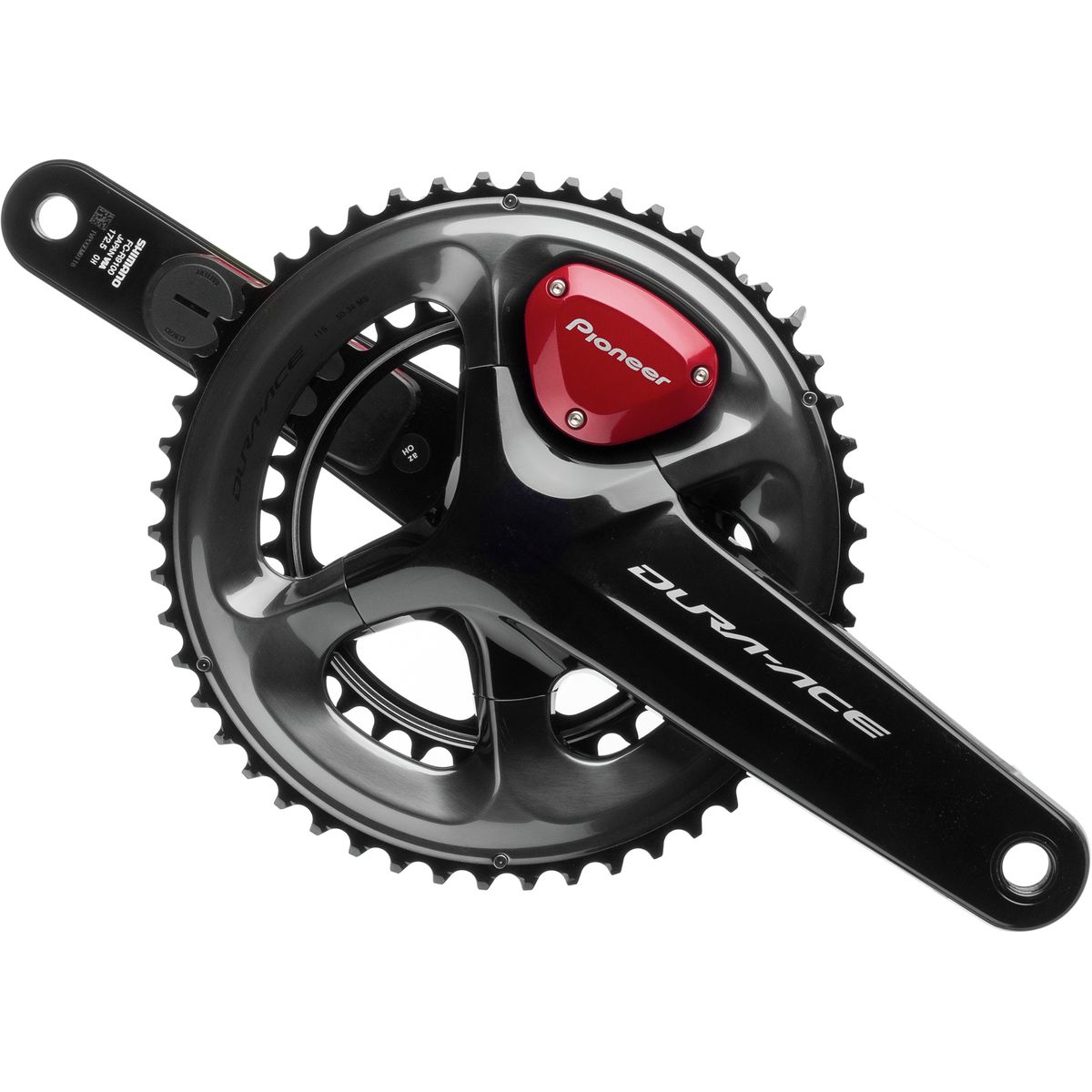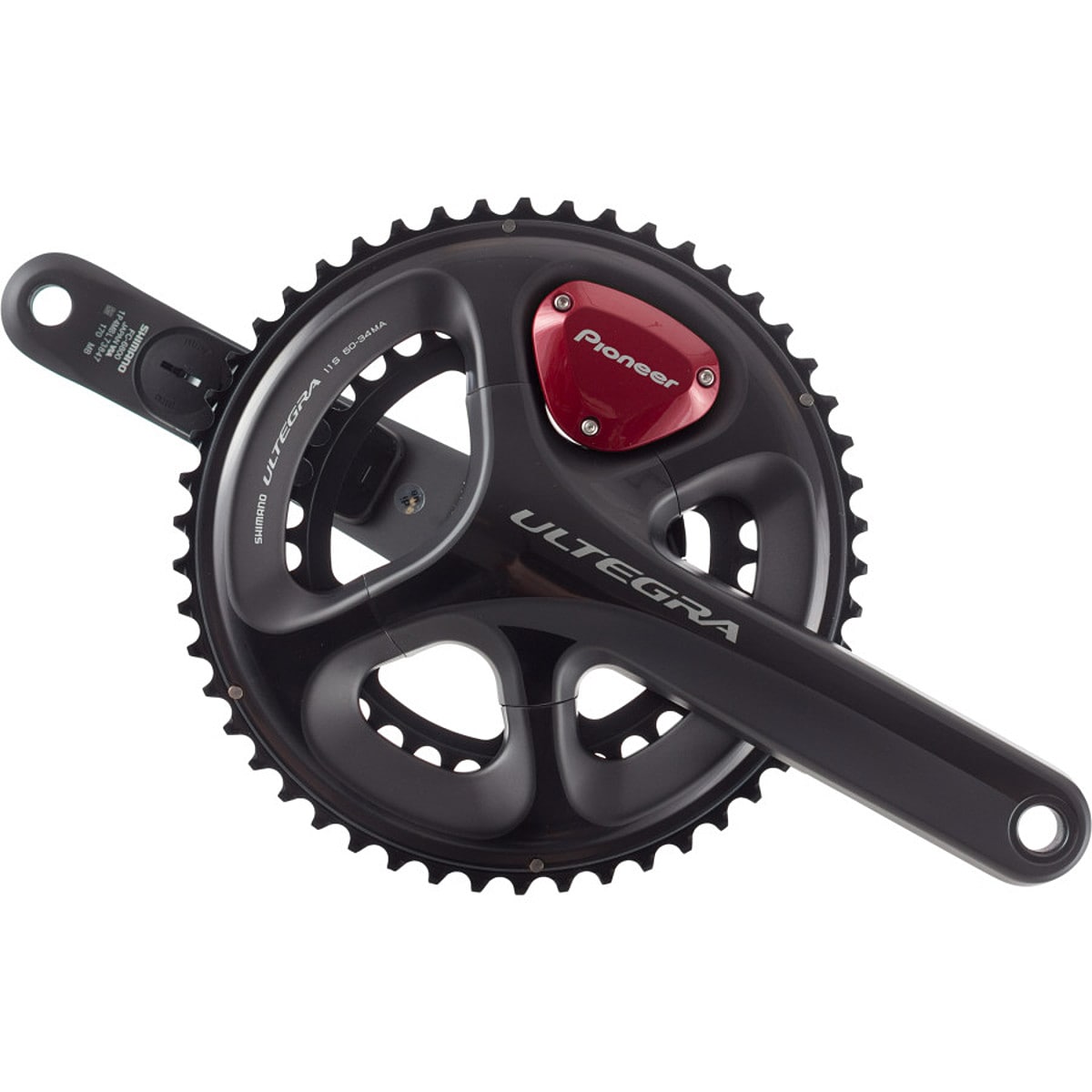
|
Proven in the peloton and available with Shimano's flagship new flagship drivetrain, the Pioneer Dura Ace R9100 Powermeter Crankset adds data collection to your training, helps you analyze every ride, and doesn't compromise the drivetrain for those of us who appreciate a build where every component is the same make and model. Its sleek design integrates cleanly into the crankset and features dual leg strain gauges for independent pedal data and other detailed metrics. It transmits those data to any ANT cycling computer, and pairing it with one of Pioneer's own cycling computers opens up an even wider world of torque vector analysis for those of us who want to dig into the really nitty gritty minutiae in search of marginal gains and a few extra watts. The system measures pedaling force, direction, and overall efficiency via dual strain gauges bonded to the crank arms. Either sensor unit captures 12 points of rotation at 30 degree intervals by measuring minute changes in the shape of the crank caused when force is applied while pedaling. From this, force is calculated in both the direction of rotation and the radial direction. The combination of these two force components indicates the direction in which the total force is being applied, which is shown using the system's force vectors. Also, a magnet ring that attaches to the bottom bracket measures the position of the crank, allowing precise display of the force vectors at every 30 degree interval throughout rotation. The force vectors for one full rotation are then wirelessly transmitted to any ANT head unit via the transmitter module bolted in the crankset's spider. The information centers around pedaling efficiency, giving riders the ability to target inefficiencies for improvement in training and racing. When pedaling efficiency is high, most of the rider's power is being used to rotate the pedals. So, the force measured in the direction of rotation at each of the 12 points is combined to give the total po...
|



 Blog Feed
Blog Feed Follow on Twitter
Follow on Twitter Become a Facebook Fan
Become a Facebook Fan Flickr
Flickr MySpace
MySpace



